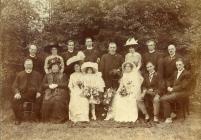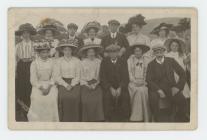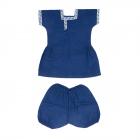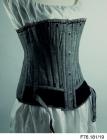Edwardian Ladies' Fashion
Items in this story:
The 'two piece' dress came into fashion, and skirts with trumpet bell shape became common during the early years. Later on, skirts fell in soft folds that curved in and flared out near the hemlines, and the waistlines rose. A 'puff sleeve' on dresses from the shoulder to the elbow which was then drawn tightly with a ribbon, with the bottom of the sleeve flaring out from the elbow to the wrist in delicate pleats.
'Tea Gowns' worn inside without corsets also became popular among the middle and upper classes, and these were made of soft fabrics, and featured ruffles and lace.
The most popular accessories worn at the time were long gloves, trimmed hats and parasols. Towards the end of this period hats grew bigger in size and featured wide brims and were sometimes adorned with large feathers.
A great emphasis was placed on leisure time during this period, and the upper middle classes in particular began to embrace leisure sports, resulting in a further development in fashion as the need for more mobile and flexible clothing styles materialised.
It was in the Edwardian era that the corset or bodice was worn by women in everyday life for the last time; however collars remained high on clothing worn during the day, and it was only in the years running up to the First World War that the lower neckline and 'V' neck was introduced.











